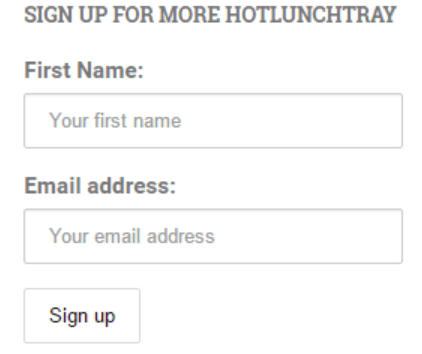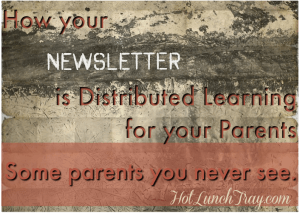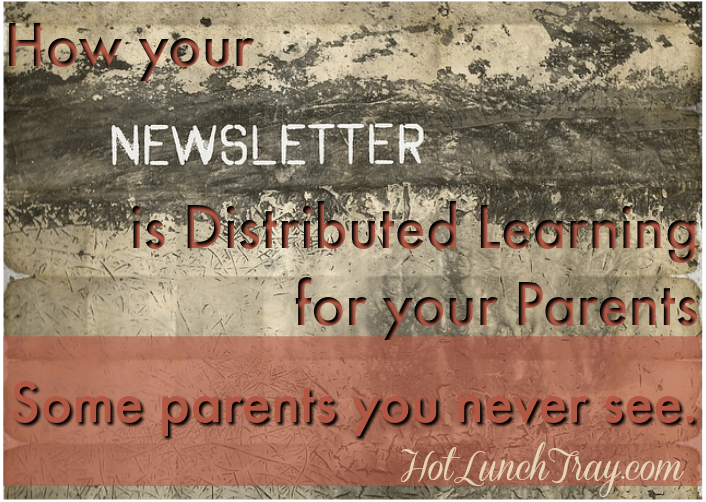As a classroom teacher you just know some things.
You know some parents cannot make Open House, Curriculum Night, Parent/Teacher Conferences, and/or Parent Teacher Association meetings.
You know that your more fragile learners have parents who might be considered “Missing In Action” by your fellow teachers if attendance of these meetings is the only measure of parental support.
If there was a way to alter the delivery of the content of those meetings AND distribute this partnership of teaching throughout the school year would you be interested?
Consider email
Distributed learning works with more than just your students. Now is the time to plan out what you will “teach” your parents over the course of one academic year. Sure, newsletters contain current information, but what about the content you can plan ahead?
Beautiful products such as SMORE are free-cheap and lovely to look at, which is what you want in a newsletter after all. You create these newsletters and can send them to an unlimited email list via  SMORE. If you are not limiting your possibilities another simple alternative is TACKK, which you can email yourself.
SMORE. If you are not limiting your possibilities another simple alternative is TACKK, which you can email yourself.
Many of the educational blogs you might follow, such as HotLunchTray.com, offer periodic newsletters via MailChimp. You will not likely need to use a paid account for classroom purposes either.
Consider mobile 
Also know that many on-the-go (or low SES) rely on their phones to read these communications – so mobile compatibility is a MUST.
Remind is a perfect blueprint for how education is moving around antiquated systems. Remind keeps the Teacher- Home relationship in constant communication without exposing either side to the adverse qualities of late-night texting by being the firewall which stores phone numbers and keeping a record of all conversations.
Another mobile friendly option is a public LMS course. Instructure offers their Canvas LMS (free under a certain size) and with this you could create a public course which is your newsletter – ready and waiting for your updates. As you update, just email your parents distribution list, pointing them towards the latest information.
Now Let’s Consider the Content
Just because parents show up to an Open House, a Curriculum Night, or a Parent Conference does not guarantee their understanding. An Educause study (1996) points out that when “the instructor delivers about 5,000 spoken words, of which students record only about 500” it is likely parents might internalize the same portion of your Open House prepared speech. You are going to want to follow-up, not just with those who do not make it to your classroom, but even with those who o make it!
Some ideas might include: How to read to your child, Word attack strategies to model at home with your student, Guidance on amount of rest/nutrition required by children the age which you teach.
Some of the things you might want your parents to do with their students might be better understood by watching a video. If you are distributing your newsletter electronically, an embedded or linked YouTube would be great. If you are sending home a paper copy you can still use YouTube, just include a QR code for the parents to scan and view with their mobile device.
What might be a good frequency for newsletters?
What might be a good arrangement of topics?
Here are some starter ideas. Ramp up/down to your classroom’s unique qualities:
August: Preview Classroom Themes/Classroom Needs
September: Provide Researched-Based Home Support Techniques/Preview Parent Conference Schedule for Year
October: Provide Ways to Volunteer for the Classroom from Home
November: Preview Holiday Reading Opportunities/Review Researched-Based Home Support Techniques
December: Provide Holiday Reading Details and Supports/Ask for scheduled Absences in Advance to Provide On-The-Road work for Students
January: Preview Parent Conferences through end of year
February:Provide Ways to Volunteer for the Classroom from Home/Update Parents on any Requirements and how to meet them at home or at school
March:Provide positive classroom statistics Showing Growth and Encouraging Continued Work from Parents/Update Parents on any Requirements and how to meet them at home or at school
April: Review Activities for Spring Break and Preview upcoming Award Days/ Remind of Parent Conferences
May: Preview Summer Reading
June: Provide Summer Reading Details and Supports
Share your newsletter tips, examples, and questions please.






2 Pingbacks